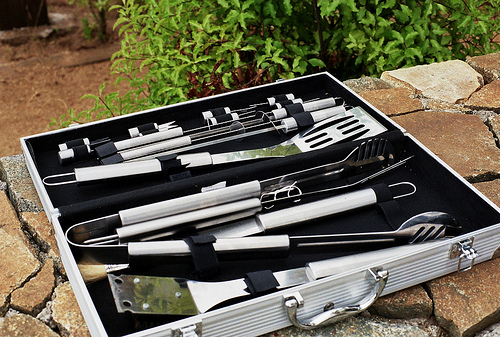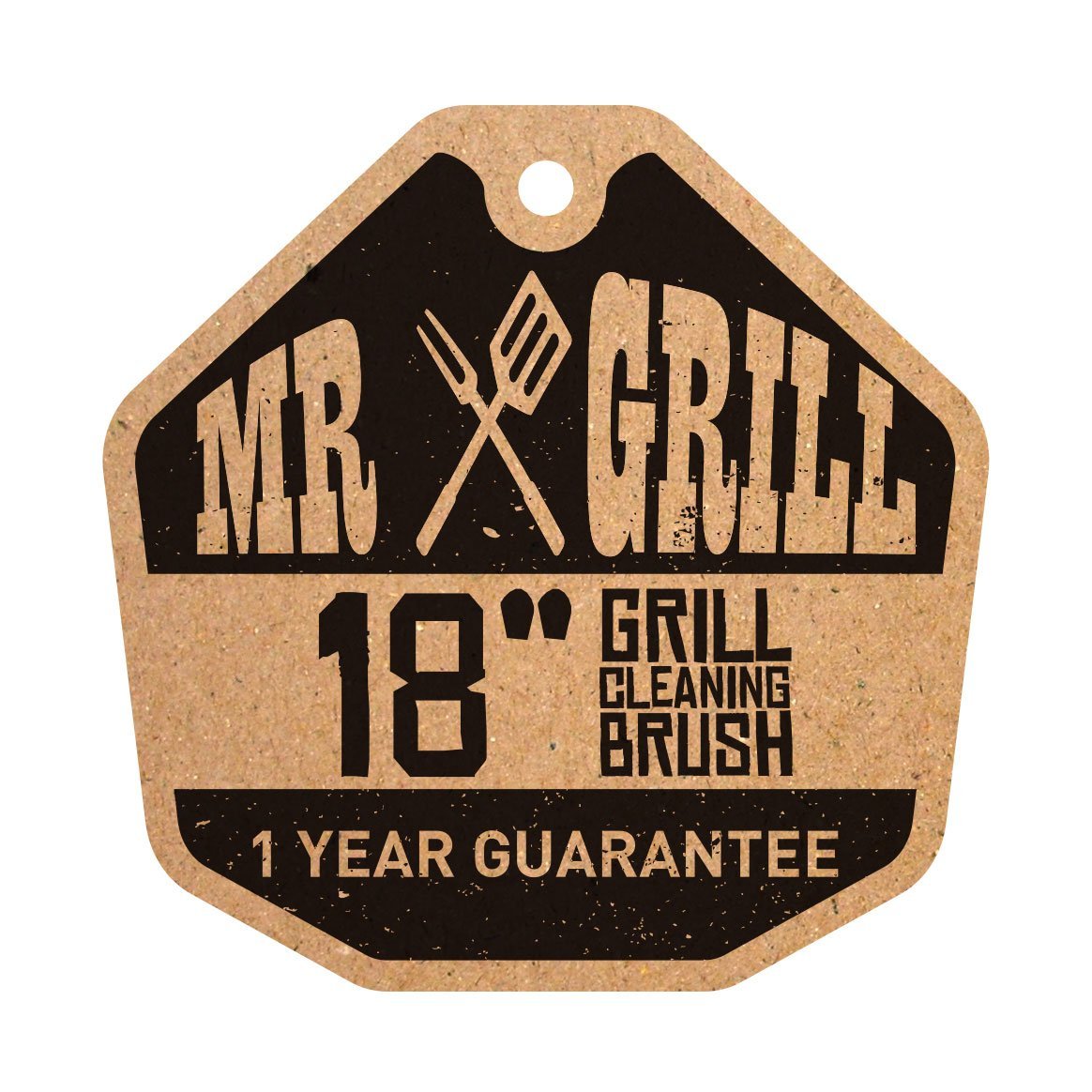ThermPro TP-20 Remote Food Thermometer Review
Pros
- Fahrenheit and Celsius Measurements
- Dual stainless steel probes
- 300 foot radio frequency effectiveness
- Visual and audio notifications
- Multiple presets with customizable
Cons
- Stainless steel cable - avoid flareups
- Receiver and transmitter not waterproof
I received the ThermPro TP-20 Remote Food Thermometer to review. The ThermPro TP-20 system allows you to monitor the temperature of two different meats using the included stainless steel probes that are rated to handle temperatures from 32-572 degrees fahrenheit. This review is sponsored by ThermPro.
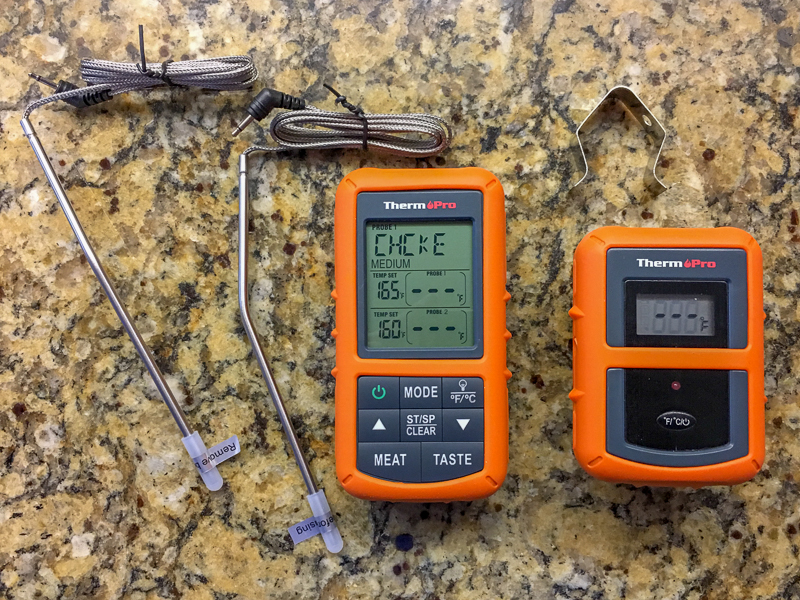
Features of the TermPro TP-20
The ThermPro TP-20 package contains a transmitter, receiver, 2 food probes and a grill clip. It conveniently comes with 4 AAA batteries to power the transmitter and receiver (both use 2 batteries each).
The connection between the receiver and transmitter of the TP-20 is done via radio frequency with an effective distance of up to 300 feet.
The ThermPro TP-20 comes with two probes that are 6.5 inches long and are made of stainless steel with a 40 inch stainless steel wire mesh cable.
There are several different meat presets built into the receiver, with the ability to measure different USDA approved temperatures (Rare, medium rare, medium, medium well, and well done). The included meat presets are:
- Ground Beef
- Ground Poultry, Beef
- Veal
- Chicken
- Pork
- Ham
- Lamb
- Fish
- Oven
- Program Mode
The ThermPro TP-20 also has a timer with the ability to count down or count up with two time duration options (99 mins, 59 seconds or 99 hour, 59 mins).
Temperature can be measured in fahrenheit or celsius and can easily be switched between the two options on the receiver unit.
Both units are orange with grey buttons. The orange sleeves are made of rubber and the buttons made of plastic. Both units are about 1 inch thick and feel sturdy, but not sleek. Neither unit is waterproof.
Testing the ThermPro TP-20
My testing of the ThermPro TP-20 unit began with a measurement of the heat inside my grill. I connected the grill clip to one of the probes and turned the grill on high heat. I watched the temperature on the transmitter unit increase every few seconds and the corresponding temperature changes were synchronized to the receiver unit with just a second or two delay.

After measuring the temperature of the grill, I carefully removed the probe from the clip and did a thorough cleaning of the grill grates in preparation for the food I was going to cook.
I tested the TP-20 by measuring the temperature on two separate meats. I was cooking a combination of a whole chicken, sirloin steaks and grilled vegetables.
On the receiver, I set probe 1 to “CHCKE” and probe 2 to “BEEF”. The temperature for the chicken preset automatically is set at 165 degrees and cannot be adjusted. The temperature setting for the beef preset can be adjusted from:
- Rare (125 degrees)
- Medium-rare (140 degrees)
- Medium (150 degrees)
- Medium-well (160 degrees)
- Well-done (170 degrees).
The temperature can be adjusted by selecting the “TASTE” selector on the receiver.
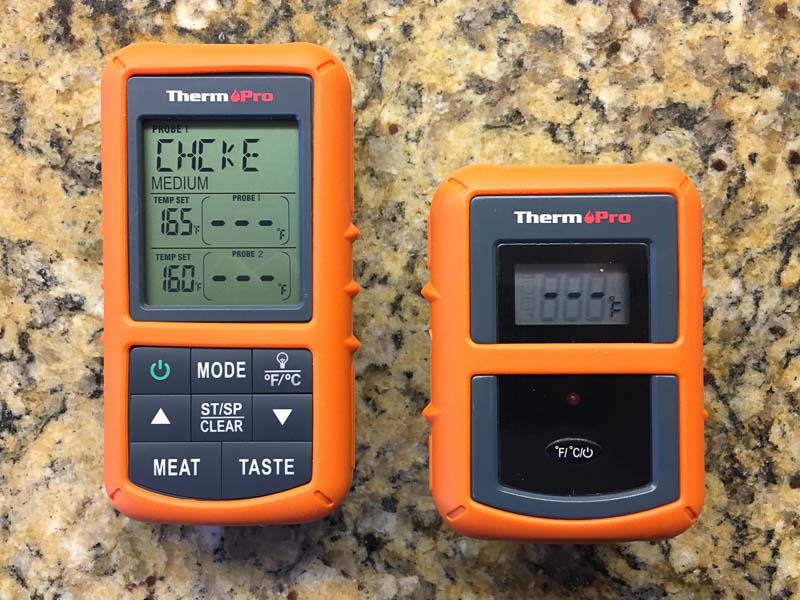
I inserted the first probe into the breast of the chicken and the second probe into the thickest sirloin steak and placed them on the grill.
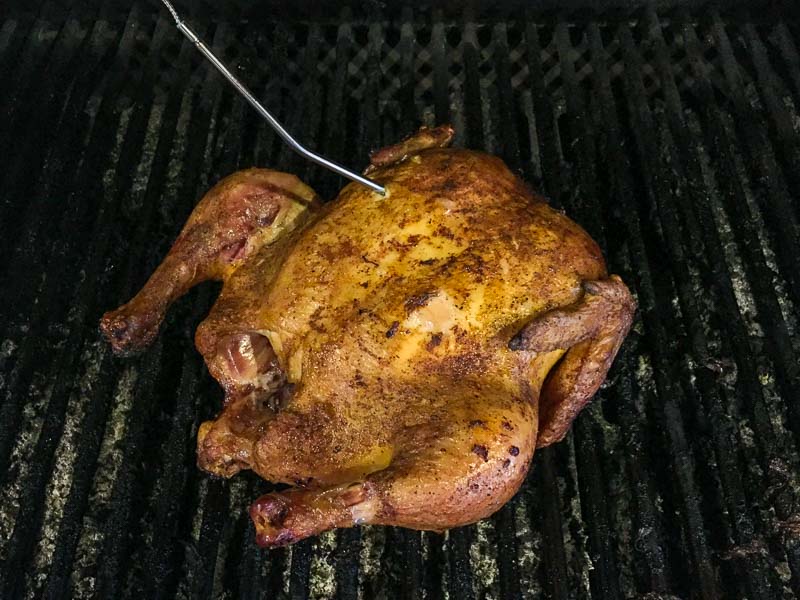
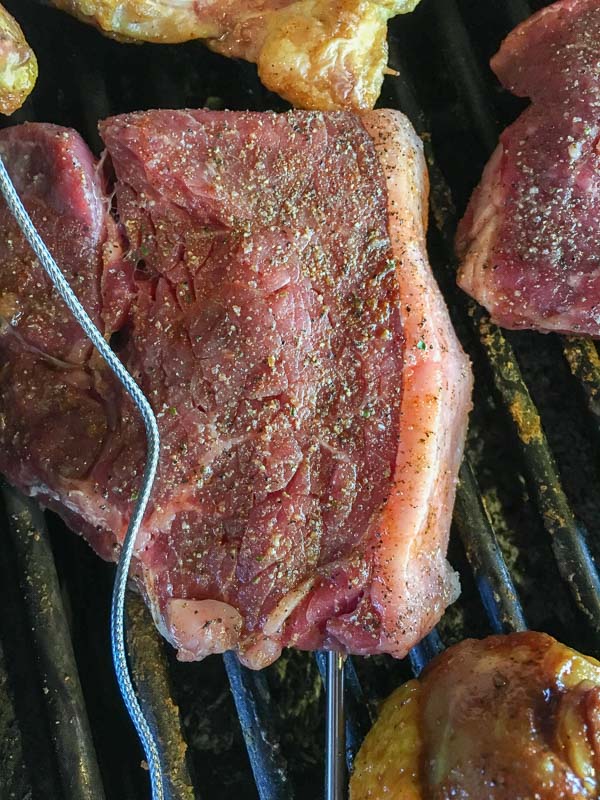
I then sat back and enjoyed a football game with my family without having to get up and check the food every few minutes. Here was the grill setup.

I frequently checked how the temperatures were doing on the receiver unit and watched the temperature rising. I did check the grill a few times to see how things were progressing and to flip the steaks to cook the other side.
At the appropriate temperature, the receiver unit began to beep and flash letting me know that the steak had reached the desired temperature. Several minutes later the receiver beeped and flashed, letting me know that the chicken was done.
The result was perfectly cooked food…

The only negative that I ran into in my testing was a reference in the manual, where it states, “position the grill probe sensor wire so they will not come into contact with flames and exit the grill surface without being pinched/crushed by the grill cover. I was able to easily position the wires to exit the grill out the rotisserie hole, but had to play with the placement of the probe wires so they wouldn’t be in a position where the wires would come into contact with the flareups that I knew would happen with the fat on the beef.
A design recommendation for ThermPro would be to change the wording on the bottom half of the receiver unit above the current temperature from Probe 1 and Probe 2 to read Meat and desired temperature (i.e. Beef – Medium) so it is clear what you are measuring without a button press.
Conclusion
The ThermPro TP-20 Remote Food Thermometer is a solid performer. The flexibility of measuring two different meats with the same unit is awesome and the effective distance of the receiver unit allows you to move around without having to stay too close to your grill. The receiver is easy to setup with each probe having different settings and the receiver continually monitors and shows the temperature of both settings without having to switch between the probe settings. Notifications on the receiver are both audio (beeping) and visual (the unit’s LCD lights up) until a button is pressed.
I would recommend the ThermPro TP-20 Remote Food Thermometer for cooking on your grill, smoker, or even your oven.

Note: I received the ThermPro TP-20 Remote Food Thermometer from ThermPro to facilitate this review. Post sponsored by ThermPro. All opinions are my own.



